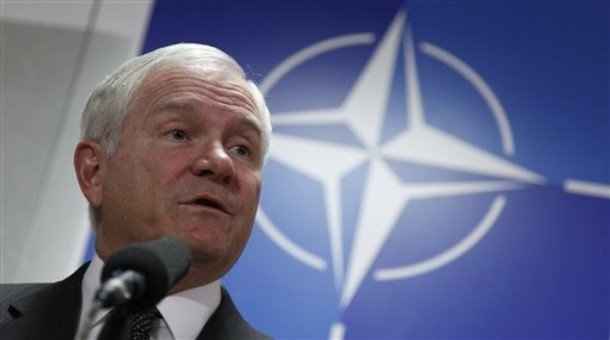
The media coverage of the NATO Defense Ministers meetings last weekend was replete with discussion regarding Afghanistan. After all, it is the largest mission the Alliance has undertaken during its history and its first outside of Europe.
While the Afghan people have the most to gain or lose from NATO’s decisions, the ministerial has reopened the debate that Europe is not doing its fair share to bring stability to Afghanistan. U.S. Defense Secretary Robert Gates captured this recurring theme in transatlantic relations: "We can’t lose our momentum or give in to calls to withdraw before the job is finished. America is willing to bear the lion’s share of the burden, but we cannot do it alone."
He continued, "Unfortunately, some recent rhetoric coming from capitals on this continent — is calling into question" the resolve expressed by NATO, President Karzai, and other contributing nations at the 2010 Lisbon Conference, he said. "Frankly, there is too much talk about leaving and not enough about getting the job done right. Too much discussion of exit and not enough discussion about continuing the fight."
To be sure, there is a growing “Afghan fatigue” in NATO capitals, and recent events in north Africa, Bahrain, Yemen, and Japan will surely shift media attention from Afghanistan.
This would be unfortunate.
With 150,000 NATO troops in Afghanistan, a NATO commitment through 2014, and a long-term commitment to train Afghan security forces, the mission requires focus. NATO Secretary General Anders Fogh Rasmussen sees that the strategy is working and it “is being achieved in ever closer partnership with the Afghans.” It is partnership on all levels that matters among NATO members and among NATO, ISAF, and the Afghan government.
As I wrote earlier in the New Atlanticist:
To make up for decades of civil war in Afghanistan and a post-2001 economy of force effort, there are about 50 countries working with Afghans every day to give them the tools to assume control for their development and security. And it is cost effective—Afghan forces operate at just one tenth the cost of American forces. And this is key to the transition plan. Through partnership, the international community is helping Afghanistan create a bulwark between Afghans who want their children to be safe and the insurgents who want to deprive them of their right to choose their own destiny.
As trans-Atlantic leaders ponder the future in Afghanistan, it is important to consider the end-state. At Lisbon and other multinational meetings, it was defined as creating a functioning Afghan state with security forces that are able to provide security and be responsive to the Afghan people. NATO Secretary General Rasmussen, affirmed this in his recent press conference. “Afghan and international security forces continue to stand shoulder-to-shoulder. Despite the ongoing challenges, we can take real pride in what we are achieving together.”
While it is tempting to move to the next crisis in Libya or Japan, leaders must recognize that Afghanistan is on a three-year trajectory to assume primary responsibility for security by December 31, 2014. To shift gears earlier could undermine international consensus and the progress being made.
Derek S. Reveron, an Atlantic Council contributing editor, is assigned to NTM-A; his latest book is Exporting Security: International Engagement, Security Cooperation, and the Changing Face of the U.S. Military. He is currently on leave from the Naval War College. Photo credit: AP Photo.
Image: gates.jpg
